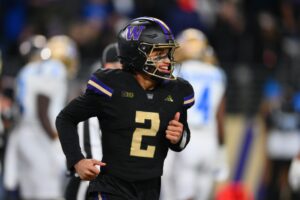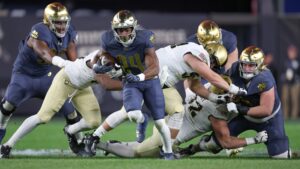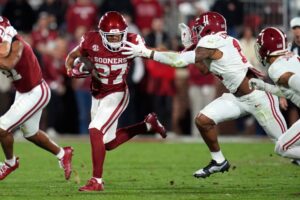The Latest on NIL Compensation
Since the State of California passed name, image, and likeness compensation legislation in October 2019, we have closely followed developments. We first started exploring the topic when the NCAA announced an investigation into the topic of NIL compensation. We openly questioned how NIL regulations might look, from who would pay the athletes to whether and how NIL compensation would impact recruiting. Despite having nearly 20 months to investigate the issue, the NCAA still seems intent on waiting for Congressional guidance. After some recent developments in the arena, we decided to take a look at the latest on NIL compensation.
Still Nothing From The NCAA
As we mentioned, the NCAA started “investigating” NIL compensation in October 2019. Those investigations have not yet led to answers. Indeed, this Monday, the NCAA announced it was not ready to present any recommendations on the subject. Instead, the NCAA is simply “listening to input” from its members.
As we have discussed, of course, the issue in not straightforward. The balance between the “amateurism” that the NCAA seeks to preserve and the rights of student-athletes finds landmines everywhere. An imbalance in compensation figures could cause an imbalance in team chemistry. On the other hand, too much regulation may subject schools to Title IX inquiries. That could force compensation pooling. NIL compensation rules might upend the delicate nature of recruiting and transfer regulations.
Arguably, the NCAA, with input from the conferences and schools, remains best-positioned to balance these factors. That said, the NCAA does not sport the best track record for evenly enforcing its various rules and regulations. Perhaps, then, it is best for the NCAA to dip its toes in the water slowly.
When The States Go Marching On
In the absence of centralized rules, our nation moves as it always has. Given the lack of meaningful insight and proposals from the NCAA, the states have taken the lead. So far, Alabama, Florida, Georgia, Mississippi, New Mexico, and Tennessee have each passed laws governing NIL compensation to student-athletes.
While many of the bills passed largely share identical text, the laws have nuanced, but critical, differences. For example, compare Alabama’s HB404 and Georgia’s HB617. The laws feature identical text for 80% of the bills.
They both expressly permit student-athletes from hiring lawyers or agents to negotiate NIL compensation contracts. They both expressly prohibit schools from preventing NIL compensation or conditioning scholarships on a lack of compensation. Both prohibit schools themselves from negotiating such contracts.
Despite the similarities, however, Georgia’s law adds a new wrinkle. Georgia’s law allows, but does not require, schools to pool up to 74.99% of NIL compensation. Once pooled, the schools would distribute the money to all student-athletes. That difference creates a critical problem.
Where Is The Uniformity?
Simply, different states passed different versions of a law with the same spirit. As a result, we now have a decentralized approach that creates disparity between schools of different states. What happens to schools in states that have not yet passed NIL compensation laws? Ironically, each of the laws passed expressly prohibits any person from using NIL compensation in recruiting. Student-athletes, however, are paying close attention. How favorable a state’s NIL compensation laws are will certainly play a role in decision-making.
Lack of uniformity, in short, creates a myriad of problems. As a result, many still wonder: how do we get there from here?
Enter Congress
Congress, of course, could offer a solution. Currently, there is bipartisan effort to produce a bill that strikes a balance between the various competing interests. In examining the latest on NIL compensation, then we simply cannot overlook this eventuality. Congress will likely provide the answers, whether we want it to or not.
Last summer, in fact, the NCAA invited Congress to do just that. The Supreme Court will also weigh in, as it heard oral arguments in the NCAA v. Alston case on March 31. With disparate approaches from the states, the NCAA may well sue the states that have passed legislation. Pumping the brakes on the individual states is the only way to get to a national answer for all student athletes. Legal activity would buy time for Congress to pass its own laws. What the law may look like, however, is anybody’s guess. As a result, we remain hesitant to offer many predictions here.
Regardless, we stand certain that an NIL compensation framework is imminent. As we have in the past, we will continue to follow these developments closely.






